
Vertex Pharmaceuticals Inc
NASDAQ:VRTX
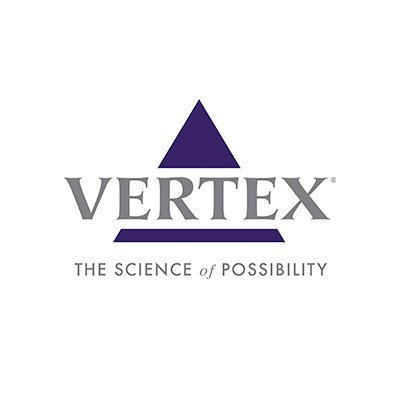

| US |

|
Johnson & Johnson
NYSE:JNJ
|
Pharmaceuticals
|
| US |

|
Berkshire Hathaway Inc
NYSE:BRK.A
|
Financial Services
|
| US |

|
Bank of America Corp
NYSE:BAC
|
Banking
|
| US |

|
Mastercard Inc
NYSE:MA
|
Technology
|
| US |

|
UnitedHealth Group Inc
NYSE:UNH
|
Health Care
|
| US |

|
Exxon Mobil Corp
NYSE:XOM
|
Energy
|
| US |

|
Pfizer Inc
NYSE:PFE
|
Pharmaceuticals
|
| US |

|
Palantir Technologies Inc
NYSE:PLTR
|
Technology
|
| US |

|
Nike Inc
NYSE:NKE
|
Textiles, Apparel & Luxury Goods
|
| US |

|
Visa Inc
NYSE:V
|
Technology
|
| CN |

|
Alibaba Group Holding Ltd
NYSE:BABA
|
Retail
|
| US |

|
3M Co
NYSE:MMM
|
Industrial Conglomerates
|
| US |

|
JPMorgan Chase & Co
NYSE:JPM
|
Banking
|
| US |

|
Coca-Cola Co
NYSE:KO
|
Beverages
|
| US |

|
Walmart Inc
NYSE:WMT
|
Retail
|
| US |

|
Verizon Communications Inc
NYSE:VZ
|
Telecommunication
|
Utilize notes to systematically review your investment decisions. By reflecting on past outcomes, you can discern effective strategies and identify those that underperformed. This continuous feedback loop enables you to adapt and refine your approach, optimizing for future success.
Each note serves as a learning point, offering insights into your decision-making processes. Over time, you'll accumulate a personalized database of knowledge, enhancing your ability to make informed decisions quickly and effectively.
With a comprehensive record of your investment history at your fingertips, you can compare current opportunities against past experiences. This not only bolsters your confidence but also ensures that each decision is grounded in a well-documented rationale.
Do you really want to delete this note?
This action cannot be undone.

| 52 Week Range |
392.81
516.74
|
| Price Target |
|
We'll email you a reminder when the closing price reaches USD.
Choose the stock you wish to monitor with a price alert.

|
Johnson & Johnson
NYSE:JNJ
|
US |

|
Berkshire Hathaway Inc
NYSE:BRK.A
|
US |

|
Bank of America Corp
NYSE:BAC
|
US |

|
Mastercard Inc
NYSE:MA
|
US |

|
UnitedHealth Group Inc
NYSE:UNH
|
US |

|
Exxon Mobil Corp
NYSE:XOM
|
US |

|
Pfizer Inc
NYSE:PFE
|
US |

|
Palantir Technologies Inc
NYSE:PLTR
|
US |

|
Nike Inc
NYSE:NKE
|
US |

|
Visa Inc
NYSE:V
|
US |

|
Alibaba Group Holding Ltd
NYSE:BABA
|
CN |

|
3M Co
NYSE:MMM
|
US |

|
JPMorgan Chase & Co
NYSE:JPM
|
US |

|
Coca-Cola Co
NYSE:KO
|
US |

|
Walmart Inc
NYSE:WMT
|
US |

|
Verizon Communications Inc
NYSE:VZ
|
US |
This alert will be permanently deleted.
 Vertex Pharmaceuticals Inc
Vertex Pharmaceuticals Inc
Vertex Pharmaceuticals Inc
In the bustling landscape of biotechnology, Vertex Pharmaceuticals Inc. stands out as a dynamic powerhouse that has deftly carved a niche in the complex domain of genetic therapies. Founded in 1989, the company initially embarked on a mission to revolutionize drug discovery through a cutting-edge rational drug design approach. Armed with an innovative spirit and a focus on niche markets, Vertex turned its attention towards cystic fibrosis—a life-shortening genetic disorder affecting the lungs and digestive system. The company’s breakthrough came with the development and approval of the first therapies that address the underlying cause of cystic fibrosis, rather than just alleviating symptoms. These products, including Kalydeco and Trikafta, have repositioned Vertex from a scrappy biotech upstart to a dominating force in the drug market as these life-changing treatments not only improve patient outcomes but also command premium pricing.
Vertex’s business model brilliantly capitalizes on its deep investment in research and development, allowing it to maintain a robust pipeline that promises ongoing growth. By channeling a substantial portion of its revenue back into R&D, Vertex seeks to extend its therapeutic successes beyond cystic fibrosis into other serious diseases with high unmet needs, such as sickle cell disease and beta-thalassemia. This strategic reinvestment supports a cyclical framework of innovation—capitalize on current successes while laying down the groundwork for future therapies. With a singular focus on specialty drugs that target specific genetic mutations or pathways, Vertex not only thrives on the immediate financial returns of its blockbuster drugs but continually invests in scientifically ambitious endeavors, thus reinforcing its status as a leader in the precision medicine sector.

In the bustling landscape of biotechnology, Vertex Pharmaceuticals Inc. stands out as a dynamic powerhouse that has deftly carved a niche in the complex domain of genetic therapies. Founded in 1989, the company initially embarked on a mission to revolutionize drug discovery through a cutting-edge rational drug design approach. Armed with an innovative spirit and a focus on niche markets, Vertex turned its attention towards cystic fibrosis—a life-shortening genetic disorder affecting the lungs and digestive system. The company’s breakthrough came with the development and approval of the first therapies that address the underlying cause of cystic fibrosis, rather than just alleviating symptoms. These products, including Kalydeco and Trikafta, have repositioned Vertex from a scrappy biotech upstart to a dominating force in the drug market as these life-changing treatments not only improve patient outcomes but also command premium pricing.
Vertex’s business model brilliantly capitalizes on its deep investment in research and development, allowing it to maintain a robust pipeline that promises ongoing growth. By channeling a substantial portion of its revenue back into R&D, Vertex seeks to extend its therapeutic successes beyond cystic fibrosis into other serious diseases with high unmet needs, such as sickle cell disease and beta-thalassemia. This strategic reinvestment supports a cyclical framework of innovation—capitalize on current successes while laying down the groundwork for future therapies. With a singular focus on specialty drugs that target specific genetic mutations or pathways, Vertex not only thrives on the immediate financial returns of its blockbuster drugs but continually invests in scientifically ambitious endeavors, thus reinforcing its status as a leader in the precision medicine sector.
Earnings Calls
Management
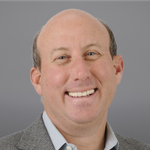
Dr. Jeffrey Marc Leiden is a prominent figure in the biotechnology and pharmaceutical industries, best known for his leadership role at Vertex Pharmaceuticals Incorporated. He earned both his M.D. and Ph.D. from the University of Chicago, showcasing his strong background in both medicine and scientific research. Dr. Leiden's career is distinguished by his contributions to transforming scientific discoveries into innovative treatments for serious diseases. Before joining Vertex, he held numerous positions in academia and industry. Notably, he served as a professor at Harvard Medical School and as a cardiologist at Brigham and Women’s Hospital, where he contributed to significant medical research and education. At Vertex Pharmaceuticals, where he served as CEO and later as Executive Chairman, Dr. Leiden played a critical role in developing breakthrough therapies for cystic fibrosis. His leadership was instrumental in shifting the company’s strategy towards innovative drug development, which led to the production of highly effective treatments targeting the underlying genetic causes of diseases. Dr. Leiden is also respected for his work in advocating for patient access to new therapies and emphasizing the importance of personalized medicine. Under his guidance, Vertex has become one of the leading companies in the biotech industry, known for its commitment to improving the lives of people with serious illnesses through cutting-edge science. Beyond his corporate responsibilities, Dr. Leiden has served on several boards and committees, contributing his expertise to advancing scientific research and healthcare policies. His career exemplifies a commitment to bridging the gap between scientific discovery and clinical application, making significant impacts on patient care worldwide.

Dr. Leiden's career is distinguished by his contributions to transforming scientific discoveries into innovative treatments for serious diseases. Before joining Vertex, he held numerous positions in academia and industry. Notably, he served as a professor at Harvard Medical School and as a cardiologist at Brigham and Women’s Hospital, where he contributed to significant medical research and education.
At Vertex Pharmaceuticals, where he served as CEO and later as Executive Chairman, Dr. Leiden played a critical role in developing breakthrough therapies for cystic fibrosis. His leadership was instrumental in shifting the company’s strategy towards innovative drug development, which led to the production of highly effective treatments targeting the underlying genetic causes of diseases.
Dr. Leiden is also respected for his work in advocating for patient access to new therapies and emphasizing the importance of personalized medicine. Under his guidance, Vertex has become one of the leading companies in the biotech industry, known for its commitment to improving the lives of people with serious illnesses through cutting-edge science.
Beyond his corporate responsibilities, Dr. Leiden has served on several boards and committees, contributing his expertise to advancing scientific research and healthcare policies. His career exemplifies a commitment to bridging the gap between scientific discovery and clinical application, making significant impacts on patient care worldwide.

Dr. Reshma Kewalramani is a prominent figure in the biotechnology and pharmaceutical industry, currently serving as the President and Chief Executive Officer of Vertex Pharmaceuticals Incorporated. She made history as the first female CEO of the company and has played a crucial role in its direction and growth. Born in Mumbai, India, Dr. Kewalramani moved to the United States at the age of 11. She pursued her medical education at the seven-year medicine program at Boston University, followed by a residency in internal medicine and a fellowship in nephrology at Massachusetts General Hospital and Brigham and Women’s Hospital. She also holds a degree in business from MIT Sloan School of Management, highlighting her commitment to combining medical and business expertise. Dr. Kewalramani joined Vertex Pharmaceuticals in 2017, initially serving as the Chief Medical Officer. She was instrumental in advancing several key programs at the company, with a particular focus on transformative treatments for serious diseases. Under her leadership, Vertex has made significant strides in the treatment of cystic fibrosis and has expanded its research efforts into other areas, including pain, sickle cell disease, and type 1 diabetes. Notably, Dr. Kewalramani is recognized not only for her leadership in the pharmaceutical arena but also for her dedication to diversity and inclusion within the industry. She is a respected voice advocating for scientific innovation and has received various accolades for her contributions to healthcare and leadership. Dr. Kewalramani’s career is marked by her commitment to harnessing scientific advancements to create impactful therapies that address unmet medical needs, underscoring her role as a visionary leader in the modern pharmaceutical landscape.

Born in Mumbai, India, Dr. Kewalramani moved to the United States at the age of 11. She pursued her medical education at the seven-year medicine program at Boston University, followed by a residency in internal medicine and a fellowship in nephrology at Massachusetts General Hospital and Brigham and Women’s Hospital. She also holds a degree in business from MIT Sloan School of Management, highlighting her commitment to combining medical and business expertise.
Dr. Kewalramani joined Vertex Pharmaceuticals in 2017, initially serving as the Chief Medical Officer. She was instrumental in advancing several key programs at the company, with a particular focus on transformative treatments for serious diseases. Under her leadership, Vertex has made significant strides in the treatment of cystic fibrosis and has expanded its research efforts into other areas, including pain, sickle cell disease, and type 1 diabetes.
Notably, Dr. Kewalramani is recognized not only for her leadership in the pharmaceutical arena but also for her dedication to diversity and inclusion within the industry. She is a respected voice advocating for scientific innovation and has received various accolades for her contributions to healthcare and leadership.
Dr. Kewalramani’s career is marked by her commitment to harnessing scientific advancements to create impactful therapies that address unmet medical needs, underscoring her role as a visionary leader in the modern pharmaceutical landscape.

Charles F. Wagner Jr. served as the Executive Vice President and Chief Financial Officer at Vertex Pharmaceuticals Incorporated. In this role, he was responsible for overseeing the company's global financial operations, including strategic financial planning, capital allocation, and investor relations. Wagner brought extensive experience in corporate finance and biopharmaceuticals to Vertex, contributing significantly to the company's financial strategies and operations. Before joining Vertex, he held leadership positions at other significant organizations, such as Ortho Clinical Diagnostics, where he was Executive Vice President and CFO. He also served at Bruker Corporation, where he helped guide financial strategies and improve operational efficiencies. His career includes a mixture of finance roles and consulting positions, showcasing a robust understanding of both the financial and operational aspects of large enterprises. Wagner holds a Bachelor's degree in mechanical engineering from the United States Naval Academy, and an MBA from the Harvard Business School, underscoring his strong academic foundation in leadership and financial management.

Before joining Vertex, he held leadership positions at other significant organizations, such as Ortho Clinical Diagnostics, where he was Executive Vice President and CFO. He also served at Bruker Corporation, where he helped guide financial strategies and improve operational efficiencies. His career includes a mixture of finance roles and consulting positions, showcasing a robust understanding of both the financial and operational aspects of large enterprises.
Wagner holds a Bachelor's degree in mechanical engineering from the United States Naval Academy, and an MBA from the Harvard Business School, underscoring his strong academic foundation in leadership and financial management.
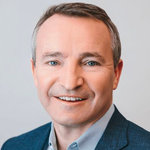
Stuart A. Arbuckle is a prominent figure in the biopharmaceutical industry, serving as the Executive Vice President and Chief Operating Officer at Vertex Pharmaceuticals Incorporated. Before his current role, he joined Vertex in 2012 and held several key positions, bringing a wealth of experience to the company. Mr. Arbuckle has been instrumental in overseeing Vertex's global commercial operations, ensuring the successful launch and commercialization of their products. He has played a pivotal role in shaping the strategic vision and operational execution that drive the company's growth and success. Before joining Vertex, he held senior leadership roles at Amgen, where he gained extensive experience in marketing and sales across various therapeutic areas. His background in the pharmaceutical industry is complemented by his academic credentials, holding a B.Sc. in Biochemistry from the University of Dundee in Scotland. Throughout his career, Stuart Arbuckle has been known for his leadership skills, strategic acumen, and contributions to the development and commercialization of innovative therapies, particularly in the area of cystic fibrosis, strengthening Vertex's position as a leader in biotechnology.

Mr. Arbuckle has been instrumental in overseeing Vertex's global commercial operations, ensuring the successful launch and commercialization of their products. He has played a pivotal role in shaping the strategic vision and operational execution that drive the company's growth and success.
Before joining Vertex, he held senior leadership roles at Amgen, where he gained extensive experience in marketing and sales across various therapeutic areas. His background in the pharmaceutical industry is complemented by his academic credentials, holding a B.Sc. in Biochemistry from the University of Dundee in Scotland.
Throughout his career, Stuart Arbuckle has been known for his leadership skills, strategic acumen, and contributions to the development and commercialization of innovative therapies, particularly in the area of cystic fibrosis, strengthening Vertex's position as a leader in biotechnology.
Dr. David M. Altshuler is a prominent figure in the field of genetics and biomedical research, and he holds the position of Executive Vice President for Global Research and Chief Scientific Officer at Vertex Pharmaceuticals Incorporated. He joined Vertex in 2014, bringing with him a wealth of experience from both academia and the pharmaceutical industry. Dr. Altshuler is widely recognized for his pioneering work in human genetics, particularly in understanding the genetic basis of common diseases. Before joining Vertex, he was one of the founding members and deputy director of the Broad Institute of MIT and Harvard, where he played a crucial role in large-scale collaborative efforts that have significantly contributed to human genetics studies. He has also been a professor at Harvard Medical School and an investigator at Massachusetts General Hospital. His research has been instrumental in identifying genetic risk factors for type 2 diabetes, cardiovascular disease, and other complex conditions. Dr. Altshuler’s work has led to advancements in personalized medicine and has influenced the development of new therapeutic approaches. As a leader at Vertex Pharmaceuticals, Dr. Altshuler is dedicated to advancing the company's innovative approach to developing transformative medicines for people with serious diseases. His deep understanding of both genetics and drug discovery processes continues to drive the company's research and development efforts. Through his distinguished career, Dr. Altshuler has received numerous accolades and has been elected to organizations such as the National Academy of Medicine and the American Academy of Arts and Sciences.
Dr. Altshuler is widely recognized for his pioneering work in human genetics, particularly in understanding the genetic basis of common diseases. Before joining Vertex, he was one of the founding members and deputy director of the Broad Institute of MIT and Harvard, where he played a crucial role in large-scale collaborative efforts that have significantly contributed to human genetics studies.
He has also been a professor at Harvard Medical School and an investigator at Massachusetts General Hospital. His research has been instrumental in identifying genetic risk factors for type 2 diabetes, cardiovascular disease, and other complex conditions. Dr. Altshuler’s work has led to advancements in personalized medicine and has influenced the development of new therapeutic approaches.
As a leader at Vertex Pharmaceuticals, Dr. Altshuler is dedicated to advancing the company's innovative approach to developing transformative medicines for people with serious diseases. His deep understanding of both genetics and drug discovery processes continues to drive the company's research and development efforts.
Through his distinguished career, Dr. Altshuler has received numerous accolades and has been elected to organizations such as the National Academy of Medicine and the American Academy of Arts and Sciences.
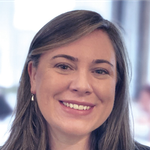
Kristen C. Ambrose, CPA, serves as the Senior Vice President and Chief Accounting Officer at Vertex Pharmaceuticals Incorporated. She plays a critical role in overseeing the company's accounting functions, ensuring financial integrity, and maintaining accurate and transparent financial reporting. With a strong background in finance and accounting, Kristen has a deep understanding of compliance and regulatory requirements in the pharmaceutical industry. Before joining Vertex, she gained extensive experience in accounting and finance leadership positions, contributing significantly to the organizations she worked with. Her expertise as a Certified Public Accountant (CPA) aids her in managing complex financial operations and leading her team effectively, supporting Vertex's financial strategies and objectives.

Jonathan Biller serves as the Executive Vice President and Chief Financial Officer at Vertex Pharmaceuticals Inc. He has an extensive background in the pharmaceutical and biotechnology industry, with a strong focus on financial management and strategic operations. Before joining Vertex, Biller held key leadership roles at multiple healthcare and life sciences companies, where he was responsible for overseeing financial strategies, legal affairs, and corporate development. He holds a Juris Doctor degree, which adds a foundational legal expertise to his financial and business acumen, making him well-equipped to navigate the complexities of the pharmaceutical sector. At Vertex, his role is crucial in supporting the company's mission to advance transformative medicines for people with serious diseases.


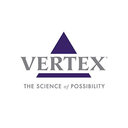


























 You don't have any saved screeners yet
You don't have any saved screeners yet
